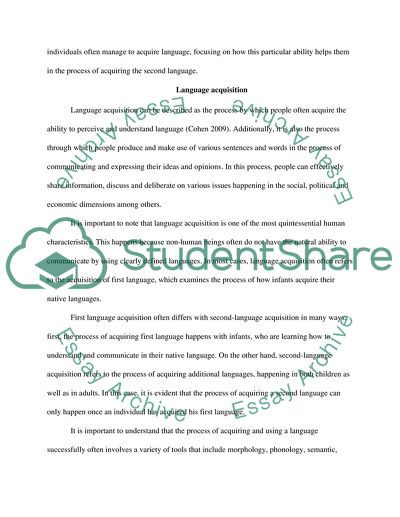Cite this document
(“Language Acquisition: The Information Processing Model Essay”, n.d.)
Language Acquisition: The Information Processing Model Essay. Retrieved from https://studentshare.org/psychology/1673032-how-do-either-information-processing-ip-or-connectionist-models-of-learning-seek-to-explain-language-acquisition-how-persuasive-do-you-find-this-approach-to-understanding-sla-questions-with-reference-to-your-own-experience-as-language-learner
Language Acquisition: The Information Processing Model Essay. Retrieved from https://studentshare.org/psychology/1673032-how-do-either-information-processing-ip-or-connectionist-models-of-learning-seek-to-explain-language-acquisition-how-persuasive-do-you-find-this-approach-to-understanding-sla-questions-with-reference-to-your-own-experience-as-language-learner
(Language Acquisition: The Information Processing Model Essay)
Language Acquisition: The Information Processing Model Essay. https://studentshare.org/psychology/1673032-how-do-either-information-processing-ip-or-connectionist-models-of-learning-seek-to-explain-language-acquisition-how-persuasive-do-you-find-this-approach-to-understanding-sla-questions-with-reference-to-your-own-experience-as-language-learner.
Language Acquisition: The Information Processing Model Essay. https://studentshare.org/psychology/1673032-how-do-either-information-processing-ip-or-connectionist-models-of-learning-seek-to-explain-language-acquisition-how-persuasive-do-you-find-this-approach-to-understanding-sla-questions-with-reference-to-your-own-experience-as-language-learner.
“Language Acquisition: The Information Processing Model Essay”, n.d. https://studentshare.org/psychology/1673032-how-do-either-information-processing-ip-or-connectionist-models-of-learning-seek-to-explain-language-acquisition-how-persuasive-do-you-find-this-approach-to-understanding-sla-questions-with-reference-to-your-own-experience-as-language-learner.


